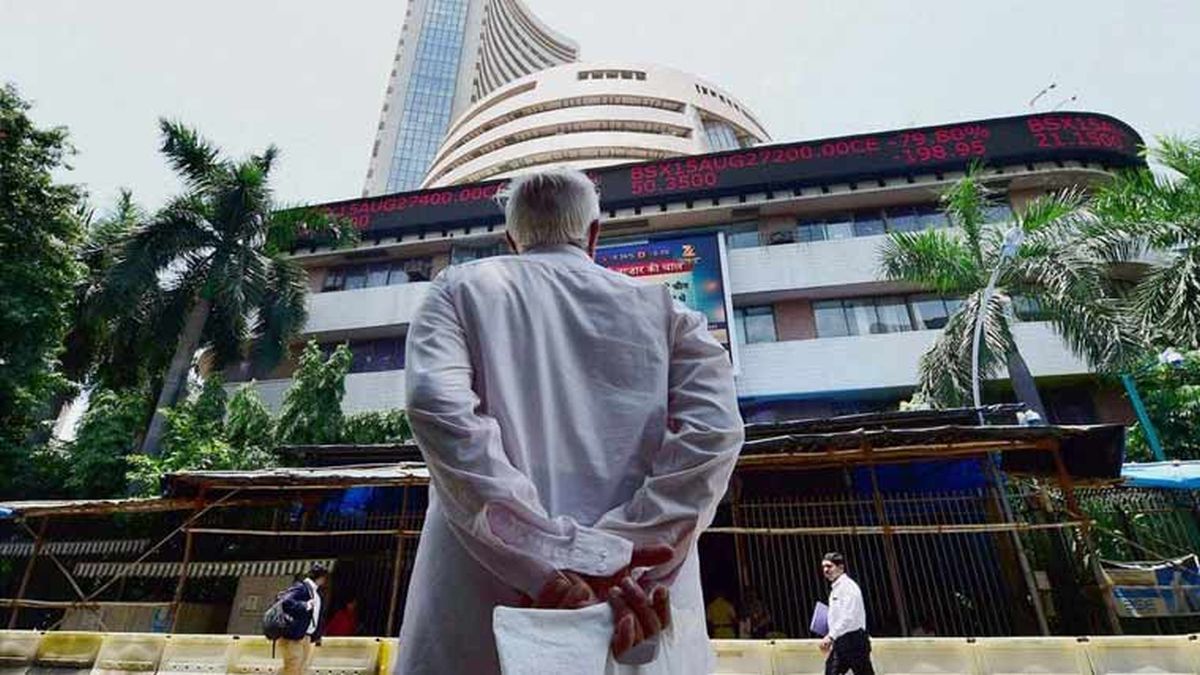Down, down and down. Stock markets around the world — the Sensex and the Nifty in India, the Nikkei 225 in Japan, Hang Seng in Hong Kong and the Straits Times Index in Singapore — were awash in red on Monday, causing panic and fear across the world.
Trading boards across Asia showed a sea of red, prompting futures trading to be suspended for some time as a so-called “circuit-breaker” on the Nikkei and Topix indexes on the Osaka Exchange in Japan’s western metropolis.
But how badly did the markets crash? And what led to this crash? We investigate and try to get you the answers.
Bloodbath at Dalal Street
India’s stock market tumbled on Monday just as it opened, with the Sensex crashing 2,686.09 points, or 3.31 per cent to 78,295.86 during the afternoon trade. The NSE Nifty tumbled 824 points or 3.33 per cent to 23,893.70.
Investors’ wealth eroded by Rs 17.11 lakh crore during the afternoon trade to Rs 4,40,04,979.86 crore, reported news agency PTI.
This follows Friday’s trend where the BSE benchmark plunged 885.60 points or 1.08 per cent to close at 80,981.95. The broader Nifty of NSE dropped 293.20 points or 1.17 per cent to end at 24,717.70.
Asian markets stumble too
But the crash isn’t limited to just the Indian stock market. Tokyo stocks sank more than 12 per cent, reported AFP, with Nikkei 225 index plunging 12.4 per cent, or 4,451.28 points, to 31,458.42 — its largest points drop in history — while the broader Topix index lost 12.23 per cent, or 310.45 points, to 2,227.15.
Impact Shorts
More ShortsToday’s fall was reminiscent of the “Black Monday” of October 1987 when Nikkei saw a plunge of 3,836 points, or 14.9 per cent. Notably, it suffered an 11.4 per cent drop in October 2008 during the global financial crisis and fell 10.6 per cent during the aftermath of massive earthquakes and nuclear meltdowns in northeastern Japan in March 2011.
Heavyweight trading houses such as Mitsubishi, Mitsui and Co, Sumitomo and Marubeni all plunged over 14 per cent, with Mitsui seeing a wipeout of almost 20 per cent of its market cap, reported CNBC.
AFP further reported that Seoul and Taipei plunged more than eight per cent each, while Singapore gave up more than four per cent and Sydney more than three per cent. It further stated that futures trading was temporarily suspended on the Nikkei and Topix indexes, on the Osaka Exchange and in Seoul in a bid to ease volatility. As per reports, the halt was for 20 minutes. Circuit breakers are activated if stocks rise or fall eight per cent.
Today’s decline followed Friday’s fall when Japan’s Nikkei 225 and Topix fell more than five per cent and six per cent, respectively. The broader Topix marked its worst day in eight years, while the Nikkei marked its worst day since March 2020.
A trend since Friday
The tumble in stocks began on Friday when the US stock market tumbled; the Dow Jones Industrial Average finished at 39,737.26, down 1.5 per cent for the day and 2.1 per cent for the week. On the same, day, European stock markets also closed sharply in the red: Amsterdam retreated by more than three per cent, Frankfurt 2.3 per cent, Paris 1.6 per cent and London 1.3 per cent.
On Friday (August 2), Tokyo led the losses with the Nikkei 225 tanking 5.8 per cent — its biggest drop since the start of the COVID-19 pandemic four years ago. Hong Kong and Sydney were off more than two per cent, Seoul gave up more than three per cent and Taipei shed more than four per cent, with losses also in Shanghai, Mumbai and Singapore.
Reasons for the crash
But what’s the reason for stocks markets across the world tumbling? The principal reason for this crash is fears that the US economy could be entering a recessionary phase. This worry emerged after data showed that US jobs growth slowed more than expected in July.
In July, the US added just 1,14,000 jobs, falling short of Wall Street’s projection of 1,75,000. This data has fuelled concerns about a hard landing in the US and fears that the Federal Reserve (Fed) may be behind the curve in avoiding a recession. The jobless rate rose to 4.3 per cent, the highest level since October 2021.
Speaking on the same, Briefing.com analyst Patrick O’Hare said, as per an AFP report: “A sober market didn’t need any more cold water poured on it, but that is exactly what it got with the July employment report, which was filled with ample headline disappointment.”
Another reason for the crash, according to experts, is the Bank of Japan (BoJ) raising interest rates to 0.25 per cent. This pushed the value of Japanese yen higher against the US dollar — the yen surged two per cent as it witnessed its highest level against the dollar since January. As CNN explains, a rising yen would hurt exporters and companies with overseas earnings.
What has worsened the situation is the rise in tensions between Iran and Israel ; there are indications that a full-blown war could break out as soon as even today. The escalation came after Ismail Haniyeh , a top Hamas leader, was assassinated when he was in Tehran to attend a government event. The Hindustan Times reports that an escalation in West Asia could push oil prices higher which are currently at eight-month lows as demand has fallen.
An Economic Times report added that after Nifty scaled the 25,000-level last week, it was succumbing to corrective pressure.
With inputs from agencies


)

)
)
)
)
)
)
)
)



